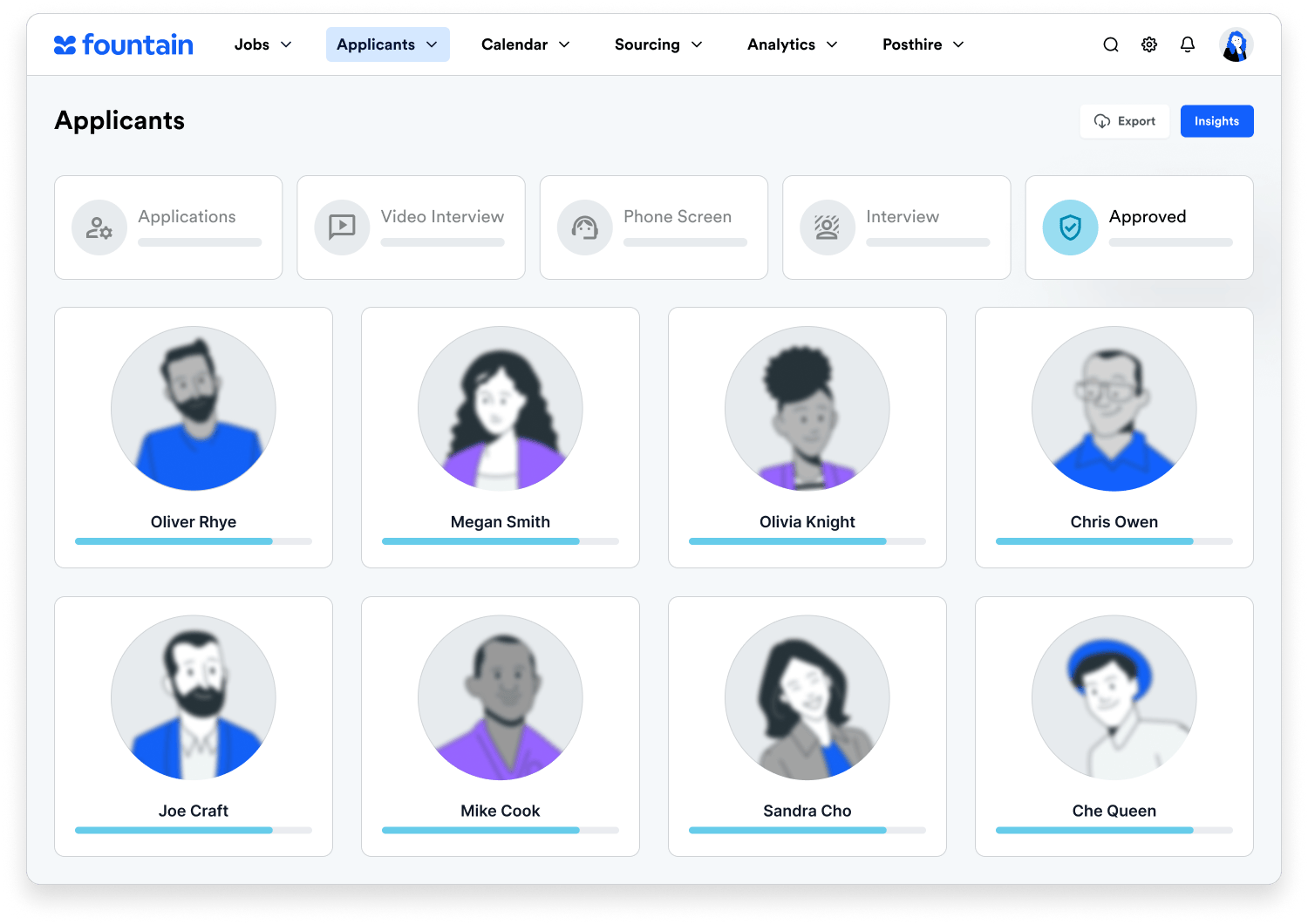When faced with slow speed, clunky execution, multi-system mayhem, and not enough resources to remedy the problem, you may think the only way to improve your frontline hiring process is to beg for more funding from the higher-ups.
But this isn’t realistic for all hiring teams.
In this post, we’ll review how to build an all-in-one, full-funnel frontline hiring process that sets you up for success, aligns with business goals, and helps your org realize its ROI faster.

Simplify frontline sourcing and recruiting
It only makes sense to start with sourcing. How, when, and where you source your candidates can make or break your frontline hiring funnel’s success, so you need a strategy that will optimize efforts and require as little capital as possible.
With a renewed sourcing strategy that is powered by integrations, the result is a frontline hiring process that is faster, more efficient, and requires less administrative energy. These strategies also work to help build a talent pool from which recruiters can pull when demand for more workers is high.
Most processes require recruiters to post job openings manually on job boards, which can eat up recruiter time and resources. However, many modern ATSes can absorb this manual task and turn it into one that only requires a few clicks.
For example, integrations with external job boards like Indeed allow recruiters to reach a much wider audience and offer the ability to program posts according to recruiters’ monthly or quarterly hiring goals.
Heavyweight frontline hiring with a lightweight lift
Once your candidates have entered the funnel, the focus shifts to moving them through as swiftly as possible. If they’re met with a lagging, unintuitive, and labor-intensive path to employment, they’re likely to abandon ship for the other hundreds of job openings that are more user-friendly.

With a few tweaks to your existing frontline hiring levers, you’ll find the right combination of efficiency, ease, and candidate autonomy, resulting in only quality workers at the finish line.
The first step to achieving this is to uncover opportunities for customization. Look for areas where you can infuse your employer brand, such as in messages to candidates and on any and all application materials. Build a careers page that not only makes it easy for applicants to find answers to commonly asked questions but also sings with your brand essence, using logos, slogans, and colors to invite candidates to be a part of your world. This helps create a sense of belonging before candidates even join the team.
Next, if you haven’t already, embrace the concepts of automation and artificial intelligence (AI) to condense lengthy duties and free up more time. Rather than using these two technologies to undermine and usurp your recruiting team, consider them assistants that can step in where human involvement isn’t necessarily needed, tools that allow your recruiters to redirect their attention to more engaging activities.
Onboard the most qualified candidates
The goal of onboarding is to make sure new hires are as prepared as possible for their first day on the job, and beyond. This looks like ensuring their legal documents are uploaded, their background checks have been cleared, and all necessary paperwork has been completed and signed. But it also means they have the tools and training they need to perform their job duties.
Much of onboarding work can be handed off to technology, freeing up more time for recruiters to attend to more personal interactions.

To achieve a hiring process that is compliant with legal regulations, hiring teams need to have solid compliance mechanisms in place. This will allow for the collection of workforce data and documents like identification verification (I-9) and tax forms (W-2), all of which should be tracked in one comprehensive dashboard for easy monitoring.
Effective onboarding and compliance practices have a direct effect on employee retention. When new hires are verified and onboarded quickly and without friction, hiring teams are less likely to face no-shows and drop-offs, and are more likely to build a stable workforce.
Engage where it matters
Achieving all of the above only matters if you’re able to hire candidates who are engaged.
These types of workers are more active, energized, and more likely to stay with your company for a long time, allowing you to maximize your investment in the above activities.
Engaging workers early on and keeping them engaged throughout their tenure is a light lift for most modern applicant tracking systems. As mentioned, automation can play a major role here by communicating with candidates at various stages of the hiring funnel.
On the AI front, chatbots that are embedded into your careers site can answer common questions, the answers to which don’t necessitate recruiter expertise.
The next step is to make all of this communication mobile-friendly. By putting your hiring process in the palm of your candidates’ hands, you’re already a step ahead of web-only platforms. Companies that automate communications with candidates via mobile devices can substantially decrease their time-to-hire.
Get more from our e-book, “How to Do More with Less: Maximize ROI through Strategic Frontline Hiring and Retention.”

